If you want to know about the utilities in landscape development or introduction of landscaping and its role or about landscape, please click the link.
Nature and landscape are intimately connected. Landscape refers to the visible features of an area of land, which can include natural elements like mountains, forests, rivers, and oceans as well as human-made structures like buildings, roads, and bridges. Nature, on the other hand, refers to the living and non-living components of the earth that are not created by humans, including plants, animals, rocks, water, and air.
1) Nature (land and water) with landscape
i) Nature of landscape
- The landscape consists of such familiar elements as ground, water, sky, and structures.
- The landscape architect deals with humanized landscapes, such as private gardens, the public grounds adjoining buildings, and parks and such areas, which have been planned for use by people.
ii) Problems of the ground
- All landscapes are subject to natural or human modification.
- The landscape architect is concerned primarily with the problems that accompany human modification.
- The landscape architect has opportunities either to utilize existing earth forms or to model new ones to suit the needs of man.
- Consideration must be given to the soil, to drainage, grading of terraces, banks, and slopes, balancing and measuring, excavation and filling operations.
- Actual examination of the piece of ground to be landscaped is of first important.
- Such an examination is facilitated by use of a topographic, or contour, map.
iii) Topography

- A contour map, or topographic map, is shown in figure above.
- All the points on each contour line are at the same level, since they are a fixed distance above a definite point, or datum.
- The usual datum is sea level.
- When the slope is gentle, the contour lines are far apart; when the slope is steep, they are close together.
- When the slope is uniform, the contour lines are equidistant from each other.
- The grading of land may involve levelling, building up, cutting away, or a gradual passing from one plane of earth to another.
- The object of grading is to beautify and at the same time to achieve a better use of the land.
iv) Kinds of Soil
- In planning a landscape, you must take nature into account. To appreciate nature and its elements and to use them effectively in the landscape, you must understand and appreciate the basic natural forms.
- You must realize, for example, how vegetation is related to certain soils and how it appears as particular families of plants.
- There are many types of soil, which may be narrowed down roughly to clay, sand, and loam types.

- Clay soils have a greater capacity for holding water than other types, but are rather difficult to handle.
- Their physical structure is improved by the addition of sand, humus, weeds, manures, and grass clippings.
- Sandy soils are easy to work, but they leach easily.
- They are improved for growing purposes by the addition of organic material.
- Humus consists of organic material such as peat, leaf mold, and compost, and plowed-under cover crops (soybeans, alfalfa, and clover).
- A mixture of sand, clay, and humus produces a vegetation-sustaining loam.
- The addition of humus improves the structure and character of the soil as well as its water-absorbing capacity and its texture.
v) Drainage of the land
- The drainage of surface water from land often presents a problem.
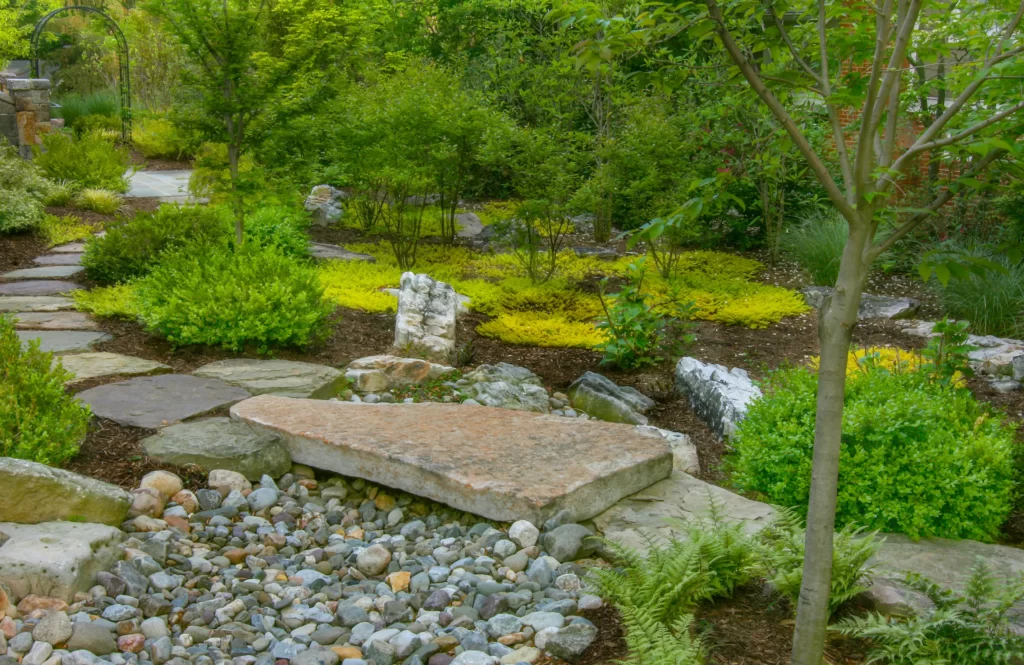
- Good drainage is needed for the protection of the given site; for the comfort of those who are to use it; and, not least, for the good of the plants to be grown upon it.
- Few plants succeed in cold, damp, undrained soil. Most plants require warmth and air at their roots.
- Any water that falls upon the area must be kept moving, though at not too fast a pace.
- The land needs to be shaped so as to carry surface water away, and to prevent its collecting or standing in pockets.
- The water must be spread out or else controlled mechanically or structurally.
- Some soils, however, are so open and dry as to pose no drainage problem.
- The drainage of an area is facilitated by proper surfacing, but it can be assisted by underground drain tiles or pipes laid in lines from 20′ (feet) to 40′ apart and from 3′ to 4′ deep, depending upon the kind of soil and climate.
- For heavy soils, the drains must be closer together.
- The bottoms of the trenches for the tile must have sufficient fall throughout their lengths to provide ready flow to the outlet.
- In general, the land near a house should slope away from the house at a rate of approximately one inch per foot.
- As far as possible, the existing drainage relations of an area, such as the points of inflow and outflow, should be preserved.
vi) Terraces and banks
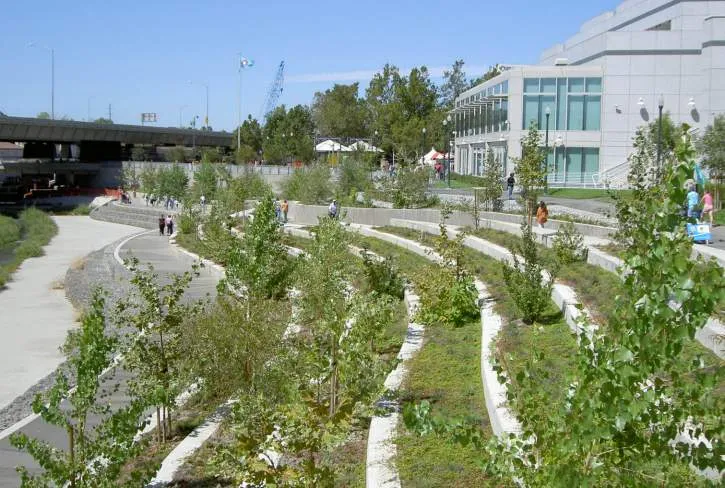
- Terraces and banks may serve a variety of purposes, and may assume a variety of shapes and sizes.
- Terraces should be almost level, with a pitch of not less than 1″ (inch) to each 10′. Grass banks should pitch not more than 1′ vertically for every 4′ horizontally.
- Such banks, especially if they are of a light, sandy variety, may need to be retained with roots of vegetation.
- The contours of the slopes should have a smooth-curving flow.
vii) Levels and Slopes

- The level, or nearly level, plane is most suitable for areas where people gather together, such as a terrace, or for areas and courts where physical exercise and games are pursued. Any grade below 3 or 4 per cent approaches a level plane.
- This implies less than 3′ or 4′ in a vertical plane for every 100′ of horizontal distance. Slopes of 4 to 10 per cent make walking and running difficult.
- Slopes that are above 10 per cent are steep and usually require steps for their utilization and treatment.
- A hill site for a home therefore offers complex problems.
- but these are often compensated for by the sense of space that comes from the extended views.
- The building up or cutting away of land to achieve a desired result usually involves disturbing the topsoil.
- This always happens where walks, drives, and foundation walls are being constructed.
- Where cutting is necessary, the topsoil should be stripped and placed to one side for future replacement as needed.
viii) Convex and Concave Surfaces
- Besides ground levels and slopes, there are the variations in ground that come into play with convex and concave surfaces.
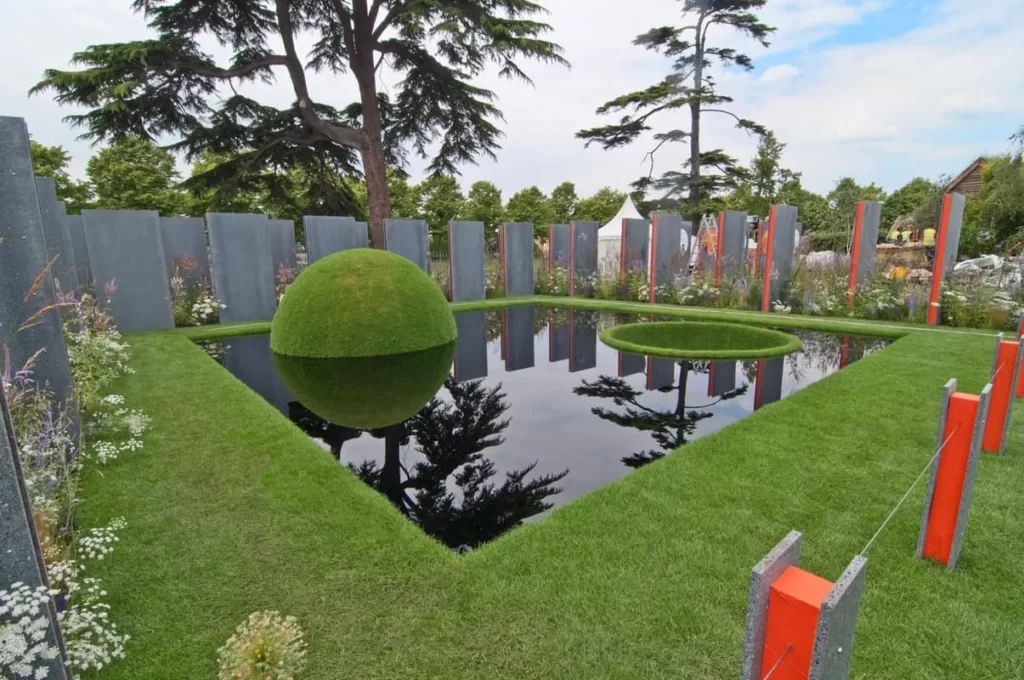
- The treatment of such surfaces passing from one plane to another with modulated gradations that shade into each other provides the landscape architect with one of his most interesting problems .in design.
- These gradations are important on embankments, where, instead of abruptly joining planes, there may be a blending of natural forms.
- The necessary shaping of the surface can often be determined by eye with the use of a line and stakes.
- But, on other jobs, the aid of leveling instruments may be required in staking out the plot.
ix) Use of Water
- Water is one of the most satisfying elements of design the landscape architect has to work with.
- It varies endlessly in character and emotional appeal.
- It can be used to provide ever-changing vistas; it contrasts against and reflects foliage and sky.
- It offers opportunities for the preservation or creation of streams, lakes, ponds, fountains, small dams, and pools.
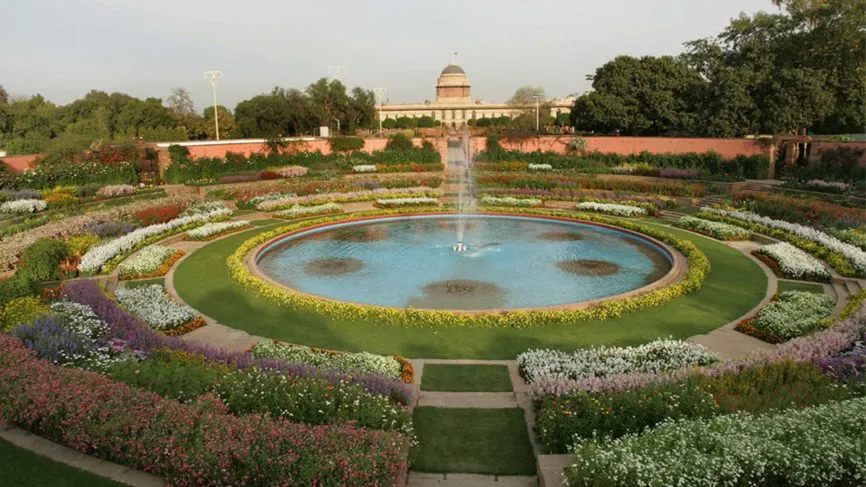
- It offers a medium for growing plants.
x) Lakes
- Either natural or man-made lakes can serve as landscape features.

- Man-made lakes depend upon the available water, the adaptability of the terrain, the possible holding qualities of the lakebed, the depths sufficient to restrain objectionable vegetative growth in the water, and the construction of a water-holding dam.
- Possible loss of lake capacity through silting should not be overlooked, since it may become a serious threat.
- Adequate controls of erosion must be established for the feeding streams.
xi) Dams

- Dams up to 30′ in height may be built of earth, rock fill, arched masonry, or buttress and timber forms.
- A dam constructed of earth is sensitive to the erosive action of water and is subject to speedy deterioration.
- This type of dam can be advantageously modified by the addition of rock fill.
- The cost of maintaining timber dams exceeds that of maintaining other more durable ones.
- A dam should be fitted into the lines of its lake.
- This can be done by making it irregular in plan and section, and, upon occasion, by laying the lower courses in natural ledges of rock.
xii) Shore lines and islands

- In man-made lakes the original configuration of the ground itself may produce satisfactory shorelines.
- In any event, the shorelines should follow long, sweeping curves, with alternating bays and projections.
- In cross section they may either lead away from the water gently, or break suddenly into cliffs or rocky crags.
- Large stretches of water require sizable trees grouped boldly on or near the banks. Shore lines can be planted with water-loving plants backed by masses of shrubby growth.
- To protect against erosion, and to maintain slopes at steep angles, stones may be thrown together loosely over the sloping surfaces.
- Concrete walls or stone masonry may be utilized in some instances where flood and ice conditions are severe.
- Planting of native and deep-rooted trees and shrubs—such as black locust, honey locust, willow, sumac, matrimony vine, and aspen—may be used to give special protection to slopes of lakes.
- If islands are to be created, they should be placed so as to simulate the results of natural forces.
- They should appear to be emerging hilltops or extensions of promontories that jut out over the water, or to match irregularities that occur on the adjacent shore.
xiii) Pools
- Garden pools should be located and shaped to suit the style, size, and shape of the garden.
- They may be geometric or natural in shape.
- Two natural-looking man-made pools are shown in figure below.
- The depth of a pool will depend on the purpose for which it is intended.
- As a general rule, the pool should be shallow where there are children.
- For growing lilies, a depth of 18″. Pool with Natural-Appearing Outline to 24″ is required.
- Moving water is desirable for fish.
- Pools are commonly constructed of concrete, brick, or tile.

- In figure above are shown sections for two pools whose basins are to be constructed of concrete.
- A pool should always be constructed so that it can be drained and cleaned when desired.
xiv) Fountains
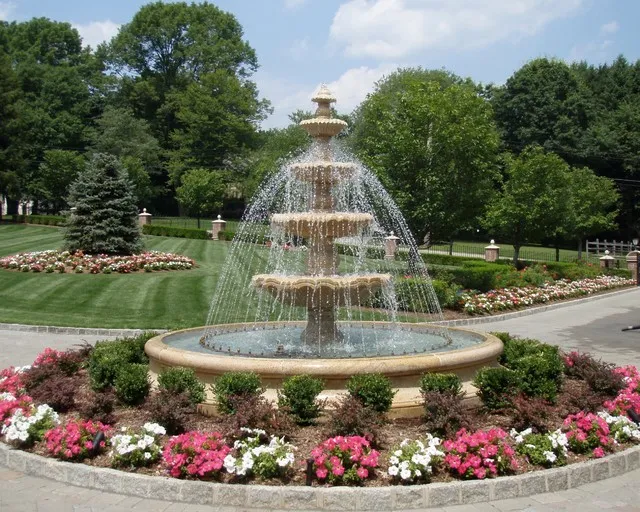
- Many garden pools include a fountain of some kind.
- Fountains may be free standing and serve as central ornaments in themselves, or they may be part of a terminal vista, say at a wall or on a terrace.
- A wellused against a garden wall in this manner is shown in figure above.
- Fountains may be quite simple, with but a single jet, or with additional jets operating from different points so that their streams interlace.
- Or they may be complex, including elaborate sculptural creations.
- Fountains should always be in proportion to their basins.
xv) Swimming pools
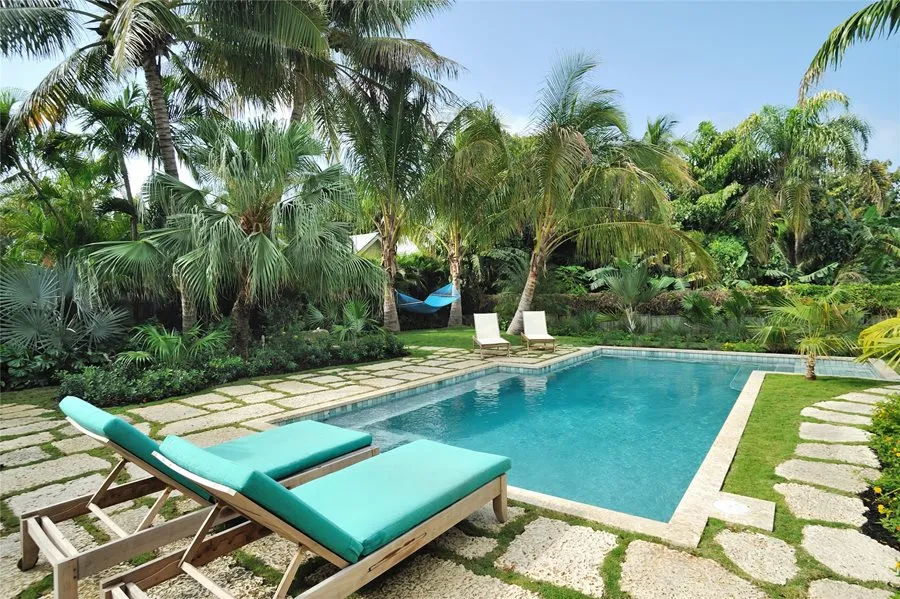
- Private swimming pools have become quite popular.
- Although swimming specifications ordinarily call for rectangular proportions and for specific relations of deep to shallow portions, private pools need not adhere too closely to these requirements.
- Whatever the type of pool, it should respect the use, form, and space relations of the garden. An irregularly shaped pool is shown in figure above.
2) Summary
- The landscape consists of such familiar elements as ground, water, sky, and structures.
- Landscapes are subject to change brought about by man and by nature.
- The landscape architect is interested primarily in landscapes altered by man.
- The process of grading a landscape, a man-made change, involves the consideration of plane, concave, and convex surfaces.
- Water is one of the most satisfying elements the landscape architect has to deal with.
- It provides a contrasting and reflecting surface for sky and foliage, and may be used in either formal or informal landscape designs.
- It becomes an element of landscape design in the form of lakes, pools, dams, and fountains.
- It offers a medium for growing plants.
Ultimately, nature and landscape are deeply intertwined, with each shaping and influencing the other in complex and interconnected ways. By studying and appreciating the complex relationship between these two phenomena, we can gain a deeper understanding of the world around us and work to protect and preserve these vital ecosystems for future generations.